United States Air Service
USAS HistorySummary 1917-1918 Lafayette Escadrille
N.124/Spa.124 1st Observation
1st, 12th, 50th, 88th 1st Pursuit Group
27th, 94th, 95th, 147th 1st Bombardment
96th, 11th, 20th 2nd Pursuit Group
13th, 22nd, 49th, 139th 3rd Pursuit Group
28th, 93rd, 103rd, 213th 4th Pursuit Group
17th, 148th, 25th, 141st 5th Pursuit Group
41st, 138th, 638th 3rd Air Park
255th. List of Aces
United States Naval Aviation
US Naval AviationUnited States Marine Corps Aviation
US Marine AviationAircraft
 Nieuport 28
Spad VII
Spad XIII
Fokker Dr.1
Albatros D.Va
Fokker D.VII
Nieuport 28
Spad VII
Spad XIII
Fokker Dr.1
Albatros D.Va
Fokker D.VII
Website: Atlanta SEO
E-mail us
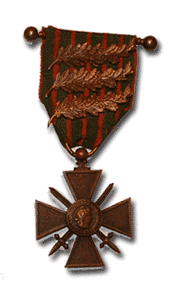
Eddie Rickenbacker
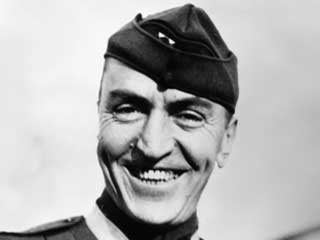
Eddie Rickenbacker. Photo National Museum of the United States Air Force.
Eddie Rickenbacker is the most famous American ace of World War I. Charismatic, tall and blessed with matinee idol good-looks, Rickenbacker soon emerged as the most famous American ace of World War I and is still a well known to most American history aficionados. Over time he proved himself a most capable leader and went on to end the war with the most kills of any American pilot flying for the United States, France, Great Britain or Italy. But his path to success had many tough obstacles...
He was born Edward Vernon Reichenbacher in 1890 in Columbus, Ohio to parents of Swiss-German origin. His father William died while Eddie was young and Eddie then went to work at the age of 12 to support his mother Elizabeth. His last name was Reichenbacher until 1917 when he anglicized it to Rickenbacker. Rickenbacker had been one of the world's most famous race car drivers before the war, earning $40,000 per year. And so perhaps it was logical that he then became General John J. Pershing's chauffer. But Rickenbacker wasn't satisfied and he wanted to see more action than just driving the famed general. So Billy Mitchell arranged to get Rickenbacker into the USAS.
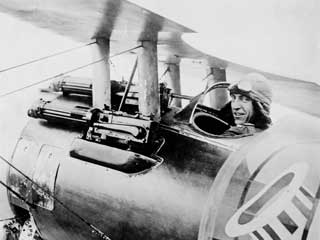
Eddie Rickenbacker in his Nieuport 28. Photo National Museum of the United States Air Force.
Rickenbacker scored his first victory at the end of April and then tallied up five more in May. Rickenbacker actually had a structural wing problem in his Nieuport 28 on May 17th. In a fight with three German Albatros fighters, he destroyed one but lost his wing when diving after the other two. Regardless, he got back to base in one piece.
Rickenbacker moved to Touquin for two weeks and then to Saints along with the rest of the 1st Pursuit Group and his 94th Hat in the Ring squadron. On July 4th, Rickenbacker went into Paris to have some fun. Rather than return home the next day, he went to the American base at Orly Aerodrome, saw three beautiful Spad XIIIs being prepped for the 1st Pursuit Group and brought one of them home. This plane with the big #1 on it would remain his mount for the duration of the war.
The 1st Pursuit Group moved to Saints on July 8-9, 1918, and it was here that the USAS would face its real baptism of fire during the Chateau-Thierry sector fighting. But Rickenbacker noticed a sharp pain in his ear and spent most of the month in a Parisian hospital, sidelined by a mastoid infection brought on by constant altitude and temperature changes he faced while flying.
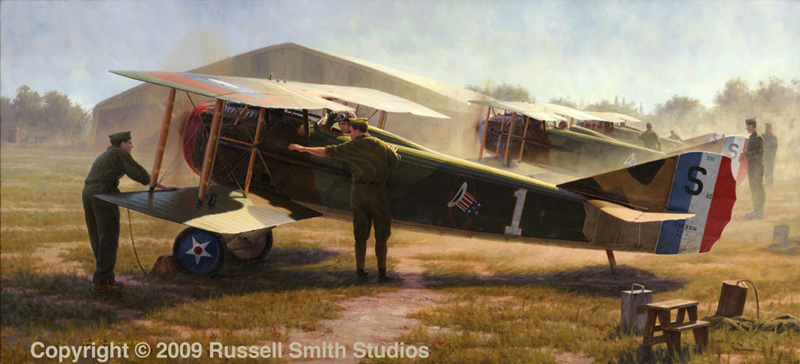
"Starting Line" - Eddie Rickenbacker in Saints by Russell Smith
This painting entitled "Starting Line" is of Eddie Rickenbacker in Old #1 about to take off on a sortie while he was in Saints. Russ writes that "most depictions of S'4523 show it in its late configuration - shortened exhaust stacks, red/white/blue (front to back) rudder, and patched bullet holes. However during its time at Saints - circa August 1918 - S'4523 carried the standard length exhaust, no bullet patches (at least not in August of 1918) and the original blue/white/red French rudder."
On August 9th, the 94th Aero Squadron managed to put up 18 planes into a patrol. The planes departed at 13h30, flew along the route which took them over Braine and then on to Fismes before returning to Saints. They encoun-tered nine Fokkers along the way – five in one formation at 2,000 meters and another four behind the Americans at the same height. The Americans were flying protection for two French Spads flying an observation mission. In spite of a total of almost 30 planes involved, there was only one combat – by Rickenbacker – north of the village of Bazoches. He fired two bursts totaling 75 rounds at one of the Fokkers. Clearly hit, the Fokker dropped into a steep dive and was “apparently out of control”, but Rickenbacker was unable to see if the German crashed before having to resume the patrol. As always, there was "one confirmation requested".
Rickenbacker would eventually receive the confirmation, and it would be the only victory the 94th got for the duration of its time in Saints.
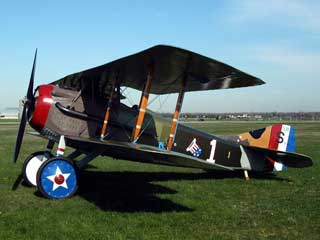
Replica of Eddie Rickenbacker's famous Spad XIII at Wright-Patterson Air Museum, Dayton, Ohio. Photo National Museum of the United States Air Force.
The 1st Pursuit Group moved to Rembercourt on September 1, 1918. On September 15, 1918, Rickenbacker scored his eighth victory and thus became very briefly America's "Ace of Aces". It had taken nearly five months from his first victory to get to this point. But the title would be his only for a few days when he would lose it to Frank Luke. From September 25th to October 10th, Rickenbacker knocked 12 German airplanes out of the sky.
October 10th was another busy day. Back at the 1st Pursuit Group, Rickenbacker had recently taken over command of the 94th Aero Squadron at Rembercourt. He liked to lead by example and told his men that he wouldn’t have them do anything or any flying that he wouldn’t do himself. Rickenbacker believed in strong planning. Times and rendezvous points were laid out. He had his flights fly parallel to one another, staying in visu-al contact not only for real strength, but for psychological support to hearten any American aviator who might waver for whatever reason.
It was on October 10th that Rickenbacker surpassed Luke and regained the “Ace of Aces” title, which he held for the rest of the war. He scored six more from the 22nd to the 30th ending up with 26 - the most kills of any of the American pilots. Unlike all previous American “Ace of Aces”, he survived to Armistice Day, November 11, 1918.
Rickenbacker would eventually end up with the Medal of Honor for his World War I exploits twelve years later in 1930.
On November 11 at precisely 11 am, 1918, World War I was over – exactly four years, three months and two weeks after it started at 11 am on July 28, 1914. Eddie Rickenbacker decided to make one last war time flight which he described in his book "Fighting the Flying Circus":
"About 10:00 I sauntered out to the hanger... I climbed into the plane and took off. I arrived over Verdun at 10:45 and proceeded on towards Conflans, flying over no-mans land. I was at less than 500 feet. I could see both Germans and Americans crouching in their trenches, peering over with every intention of killing any man who revealed himself to the other side. From time to time ahead of me on the German side I saw a burst of flame, and I knew that they were firing at me. Back at the field later I found bullet holes in my ship. I glanced at my watch. One minute to 11:00, thirty seconds, fifteen. And then it was 11:00A.M., the eleventh hour of the eleventh day of the eleventh month. I was the only audience for the greatest show ever presented. On both sides of no-mans land, the trenches erupted. Brown-uniformed men poured out of the American trenches, gray-green uniforms out of the German. After four years of slaughter and hatred, they were not only hugging each other but kissing each other on both cheeks as well. I turned my ship toward the field. The war was over."
After the war, ace of aces Eddie Rickenbacker returned to the United States to go on speaking tours. His first major endeavor after that was to use his automotive talents to found the Rickenbacker Motor Car Company using the Hat in the Ring insignia as the car company’s logo. The resulting boat-tailed coupes were both attractive and innovative introducing four wheel disc brakes to mid-priced cars in America. As with so many other great innovations, the larger manufacturers helped to quash it which helped to send the company out of business by 1927.
Rickenbacker married a beautiful divorcee named Adelaide Frost in 1922 and they adopted two sons – David and William.
While Rickenbacker never crashed in combat, he did twice in his post combat career. One of those was in Morrow, Georgia, just seven miles southeast of Atlanta’s airport on February 27, 1941. He was flying as a passenger in a 14 berth Eastern Airlines DC-3 flying from Washington D.C. to Brownsville, Texas with a scheduled stop in Atlanta. It took an hour to extricate Rickenbacker, age 50, from the wrecked DC-3. He was the most seriously injured of the survivors, being admitted to Atlanta’s Piedmont Hospital with a skull damage, a broken leg, broken ribs of which two were compound fractures, a crushed hip, a broken pelvis, a broken knee and a crushed left elbow. His left eye had popped out and was dangling from its socket. The doctor at Piedmont was, coincidentally, one of the doctors who had worked on him in Paris for his mastoid operation 24 years earlier. In spite of the extensive injuries, Rickenbacker recovered. Four months later on June 25, he was released from Piedmont and was soon back at work.
A year and a half later, on October 20th, 1942, he boarded a B-17 in Hawaii along with seven others including the crew. The bomber had seen better days but had been given second life as a transport. The takeoff was aborted due to a broken hydraulic line, which should have served as a warning of sorts. Rather than pander to rational fears, the passengers, bags of mail and top secret documents were transferred to another B-17 transport. They took off the next day to Canton Island, 1,800 miles south-west of Hawaii on the way to Australia. In spite of numerous efforts on the part of both the crew and the flight controllers at Canton, they were unable to find the island. They had overshot without realizing it.
Out of fuel and miles and miles away from any semblance of land, they ditched. It was a rough landing, but they had time to get out of the plane. They managed to get four oranges, some flares, three rafts, a 50 foot length of rope, but not much more. The B-17 floated for a bit and then slipped beneath the waves just six minutes after the crash. For three days, they survived on a total of an eighth of an orange a piece. After 13 days, one of the eight, a young man named Alex Kaczmarczyk, died. On Day 24, they were spotted and picked up by US Navy float planes. In all they drifted four or five hundred miles, and Rick had lost 40 pounds. But he survived.
Rickenbacker retired from Eastern in 1963 and at age 82 died of a heart attack in Zurich, Switzerland – the country of his parents – on July 27, 1973. He made a final posthumous journey to be reburied in his hometown of Columbus, Ohio.
Historian Stephen Longstreet wrote the following about Rickenbacker:
"In every branch of the service there is one man who becomes the symbol of that arm, taking on folk-hero status and, by some eccentric behavior or grim inhuman devotion to duty, retaining that position-often long after the war is over. He earned that reward by determination, by skill in killing, and by a flying ability that was nearly inhuman, driven by an almost inexhaustible determination. He may well be the only flier of that period and that branch of service whose name, for the average citizen, still has a familiar ring. His career has lasted well into contemporary life and commercial aviation."
Much of the above are excerpts from my book "American Eagles". Please support this website and our efforts to recognize our first combat aviators by buying it.
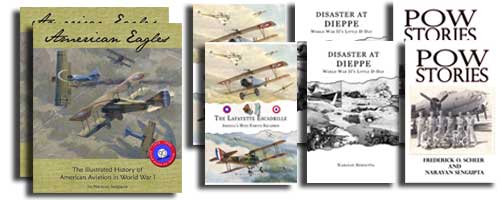
Books (.pdf Downloads) by Narayan Sengupta and Fred Scheer/Narayan Sengupta:
$ 9.95 American Eagles - The Illustrated History of American Aviation in World War I
$ 9.95 Lafayette Escadrille: America's Most Famous Squadron
$ 9.95 POW Stories of World War II
$ 9.95 Disaster at Dieppe: World War II's Little D-Day
$19.95 The Used Tank Guide of World War I and World War II
Computer Game Downloads by Narayan Sengupta:
$13.95 Hearts of Iron II scenarios (does not include game)
$13.95 Railroad Tycoon 3 scenarios/maps (does not include game)
Other:
Satisfaction Guarantee - Payment Methods - Questions/Contact Us - Donations
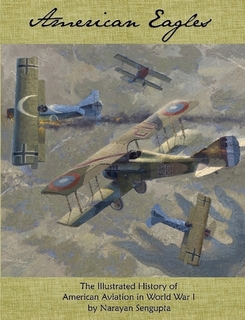
Preview (29 pages, 4.1 mb PDF).
"American Eagles - The Illustrated History of American Aviation in World War I" (370 pages, 8.5"x11", black and white, $9.95, .pdf download):
American Eagles features 220 photos, new maps and beautiful artwork by Michael O'Neal. Here's the story of American World War I combat aviation, the aviators, their planes, aerodromes, stories and their post-war lives. Read about America's first fighters, bombers and observation planes, the Lafayette Escadrille, USN Aviation, USMC Aviation, the United States Air Service, etc.
"I wanted to tell you what a great job you have done with your book! I have been totally enthralled reading through it!"
Gary Duhaine
"A great book... a book that really needs to be on your bookshelf."
Matt Jolley, WarbirdRadio.com
"The photos in your books have a clarity I have not seen among the hundreds of WWI aviation books that I've collected/amassed. Those photos make you feel like you are standing there with the subjects. Outstanding! Your passion for the subject is evident!"
Mark, Lt Col, USAF (Retired)
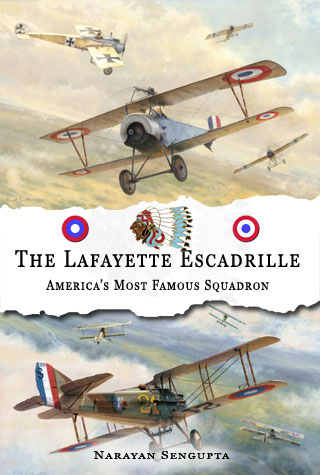
Preview (Table of Contents, Table of Illustrations, Chapter 1, 1.0 mb PDF)
"Lafayette Escadrille: America's Most Famous Squadron" (204 pages, digest size, black and white, $9.95, .pdf download):
The Lafayette Escadrille honors the insanely brave Americans who volunteered to fly for France and later the United States 103rd Aero Squadron during World War I. Read about Raoul Lufbery, Bill Thaw, Kiffin Rockwell, Norman Prince, Charles Biddle and the early days of American World War I military aviation before it was known as the United States Air Force. These men flew Nieuports and Spads against Fokkers and Albatroses. This book has extensive new research and is thoroughly well-documented. 204 pages, 62 photos and maps.
"Narayan Sengupta's "The Lafayette Escadrille: America's Most Famous Squadron" is a wonderfully written history of one of the most unique air combat units that ever existed. Not only is his book factual and chock full of historical photos (80+), the text is nicely augmented with maps, appendices, and a very complete bibliography. Great job, all around!"
Steve Ruffin, Managing Editor emeritus, "Over the Front."
"You write so well! I thoroughly enjoyed it and learned a lot."
Cynthia Pullin
"A concise, well written history of one of the most significant fighter squadrons in American history. Long before the US entered World War One, these volunteers showed that not all Americans were "too proud to fight." They helped defend the skies of France and laid the groundwork for what would eventually become the United States Air Force. Mr. Sengupta has done an excellent job of telling the story of some of the most colorful individuals in American history. Very readable and superbly illustrated, the book is thoroughly researched and well documented."
Steve Tom, PhD, Lt Col USAF (Ret)
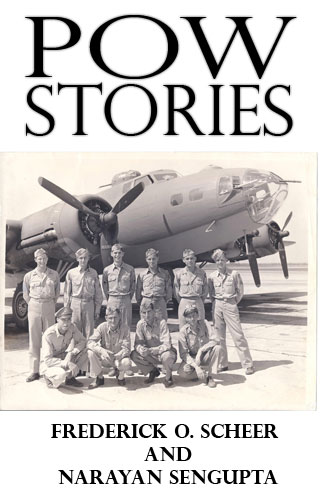
"POW Stories" (189 pages, 6"x9", black and white, $9.95, .pdf download):
POW Stories: remarkable stories told by men once POWs in Germany. Some were in the US Army, others in the United States Army Air Force. Read exhilarating, astonishing and poignant real-life stories by Fred Scheer, James Golden, Les Schrenk and many others. All were POWs in Germany during WWII. Jim was a Mustang pilot who was the last Allied pilot shot down on D-Day. Fred escaped twice and was recaptured. He made it out for good on his third escape. And Les survived the brutal German Death March. 189 pages, 35 photos and maps.
"POW Stories is a masterfully assembled collection of first-hand tales of survival, comradery and reunion, an emotional journey of brave men recounting their highs and lows and finding humor in the darkest places. The stories should never be forgotten. Well worth the read."
Patricia W. Huff
"I thoroughly enjoyed it and shed a fair amount of tears because it was so REAL. Their tales are shared so simply but the impact on the reader is huge. Excellent work."
Judy Bentley
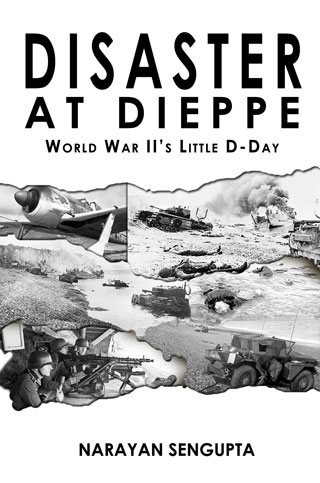
"Disaster at Dieppe" (167 pages, 6" x 9", 66 photos and maps, $9.95, .pdf download):
The raid on Dieppe, code named Operation Jubilee, was World War II's first invasion/large scale raid. Jubilee featured the first use of US Rangers, Churchill tanks, tanks in an amphibious assault, P-51s and Typhoons and more. Approximately 6,000 troops crossed the English Channel: they included 5,000 Canadians, 1,000 British, 50 American Rangers and 24 French light infantry. Poor planning and Murphy's Law led to an 85% casualty rate for the Canadians who landed! It was a rate brutally worse than the horrific 10% suffered by the US Marines at Tarawa in late 1943 or the 15% sustained by Americans on D-Day, June 6, 1944, at Omaha Beach. But their sacrifice was not in vain and may have saved 10 times as many lives on D-Day. This is an easy read that's also thoroughly documented. Its tables and six-page index makes it a great reference book. 167 pages, 6" x 9", 66 photos and maps.
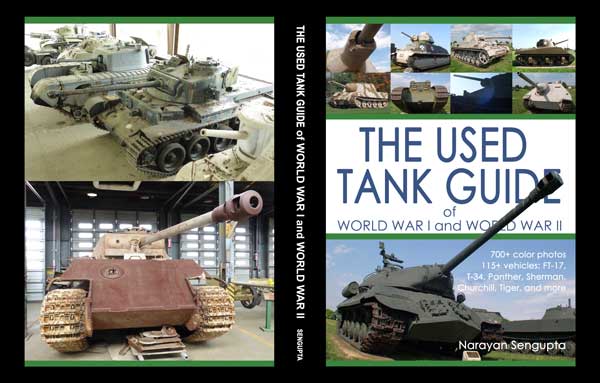
"The Used Tank Guide of World War I and World War II" (230 pages, 8.5"x11", full color, 700+ photos, .pdf download, $19.95):
The Used Tank Guide has a 36-page overview of World War I and World War II tanks (and self-propelled artillery and tank-destroyers, etc.). Then is the eye-candy photo album section with 700+ fantastic full-color photos and 115+ profiles of tanks, self-propelled guns and tank destroyers in the most color-packed book on World War I and World War II armored vehicles ever...
Profiles include: British Mark IV, Whippet, Anglo-American Mark VIII, Schneider, St. Chamond, Renault FT, GPF 155, Somua S-35, Char B-1bis, AMR-33, R-35, AMC-35, Hochkiss H-35, Sexton, LT-35, Matilda II, Churchill, Valentine, Crusader, Cromwell, Comet, Panzer I, Panzer II, Panzer III, Panzer IV, Wespe, Marder, Hetzer, Nashorn, Brummbar, Panther, Panther II, Tiger, King Tiger, Jagdpanzer, Elefant, Jagdpanther, Jagdtiger, Skelton, Ford 3 Ton, M1931 Christie, M3 Stuart, M3 Lee/Grant, M4 Sherman (75, 76, Easy 8 and Firefly variants), M-6 heavy, M-18 Hellcat, M7 Priest, M8 Greyhound, M10 Wolverine, M24 Chaffee, M26 Pershing, T28, M40, LVT(A), T-34, T-34/85, KV-1, SU-76, SU-85, SU-100, IS-2, IS-3, Semovente da 75/18 M42, Type 95 Ha-Go, Type 97 Chi-Ha, and so many more stunning tanks and rare tanks from across the world.
This exquisite collection showcases tanks in full-color as never seen before. Countries represented: Canada, Czechoslovakia, France, Germany, Italy, Japan, Sweden, USSR, United Kingdom and USA.
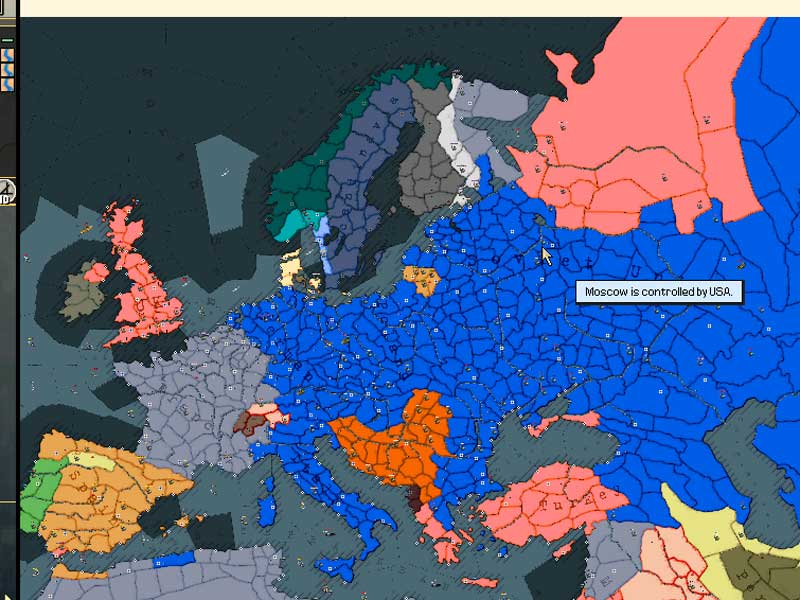
Bad Boys is a terrific scenario where the US President makes the United States very aggressive, attacking Nazi Germany and other dictatorships, but the US sells its soul in the process... Download for $13.95. Original game not included, but can be bought elsewhere online. Hearts of Iron II scenario - Bad Boys! - more information on my 5 Star General website...
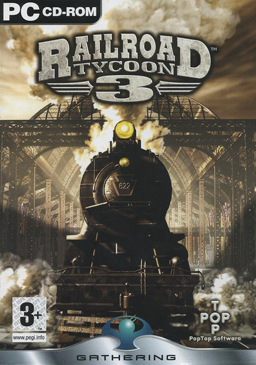
Here are several terrific extra maps (scenarios) for Railroad Tycoon 3. Download for $13.95. Original Railroad Tycoon game NOT included, but can be bought elsewhere online. More details: Railroad Tycoon 3 Maps!
Help us keep offering our research services. We typically spend 30 minutes per person we assist. If you like the help you received, then consider donating $25 (or any amount you would like). It pays for our hosting fees, research time, the resources we use for research, things we e-mail you and much more. This all helps to keep alive the proud legacy of the United States Air Service and our American World War I pilots, observers and other personnel.
30-Day Guarantee
If you are unsatisfied with download bought here, let me know at E-Mail Us within 30 days from the day of your purchase, and I'll refund you 100% of your money. If you are unsatisfied with any of my books (print version), then I let me know and I will refund you 50% of the purchase price (not including shipping and handling). You can even keep the book! We lose money, but we're confident you will be pleased with the book.
Payment Methods
We accept all major credit cards and PayPal.
Questions
If you have any other questions, then please E-Mail Us .
Events/Airshows
 Events/Airshows
Events/Airshows
Pilots/Aviators
 Raoul Lufbery
Raoul LufberyAce of Aces Eddie Rickenbacker
26 victories Quentin Roosevelt
Son of President KIA Frank Luke
18 victories in 17 days Eugene Bullard
1st African Am. Pilot David Ingalls
1st US Navy Ace List of USAS Pilots
Find a Relative American WWI Pilots
Mini bios
USAS Research
 USAS Videos
Reading List
USAS Videos
Reading ListWWI US Aviation Related Links
WWI US Aviation Credits War Wings
by Phillip W. Stewart WWI Maps
Units & Airfields Payne Field
USAS Aerodromes now... USAS Archives
Questions? Need Help? American Expeditionary Forces
WWI Doughboys in France